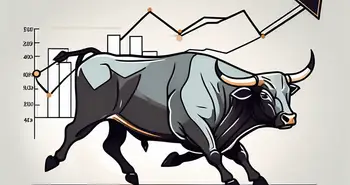The Comprehensive Guide to Covered Call Writing: Maximize Your Income with Options Strategies

As an experienced investor, I have found that covered call writing is one of the most effective strategies for generating income from stocks. In this ultimate guide, I will provide you with a comprehensive understanding of covered call writing and share some valuable insights on how to make the most out of this strategy.
Understanding Covered Call Writing
Let's start by demystifying the concept of covered call writing. In simple terms, it involves selling call options against stocks that you already own. By doing so, you are essentially renting out your stocks to other investors, allowing them to buy them from you at a predetermined price, known as the strike price.
Why would anyone want to buy call options from you? Well, these buyers have a bullish view on the stock and believe that its price will increase in the future. By purchasing your call options, they get the opportunity to buy the stock at a lower price than the market value when the options expire.
Covered call writing is a conservative strategy that allows you to generate income while still holding onto your stocks. It is a win-win situation for both you and the option buyers.
For example, let's say you own 100 shares of Company X, currently priced at $50 per share. You can sell a call option contract to another investor, giving them the right to buy your shares at $55 within a certain timeframe. For this agreement, you receive a premium, which is essentially the price the option buyer pays you for the option contract.
Definition and Basics of Covered Call Writing
Covered call writing, also known as a buy-write strategy, involves selling call options against stocks you already own. It's called “covered” because you already own the underlying stocks, which provides a level of protection.
The goal of covered call writing is to generate income (premium) from option buyers. By selling call options, you're giving someone else the right to buy your stocks at an agreed-upon price within a specified period. In return, you receive a premium, which you can keep regardless of whether the option is exercised or not.
It is essential to note that covered call writing works best for stocks that you expect to have stable or slightly increasing prices. This strategy is not ideal for stocks with significant volatility or uncertain future prospects.
The Importance of Covered Call Writing in Investment
Covered call writing is a powerful tool in an investor's arsenal due to its potential to generate consistent income. While it may not provide the same explosive returns as risky investments, it offers a reliable source of revenue to offset any potential losses.
One of the main benefits of covered call writing is that it allows you to lower your effective cost basis for owning a stock. By collecting premiums from selling call options, you can reduce the overall price you paid for the shares.
Moreover, writing covered calls can also provide some downside protection during bearish market conditions. Since you already own the stocks, the premiums you receive can cushion any potential losses in the stock's price.
The Mechanics of Covered Call Writing
Steps to Write a Covered Call
Now that we have a clear understanding of what covered call writing is, let's dive into the mechanics of the strategy. Here are the steps to write a covered call:
- Select a stock: Choose a stock that you own and are willing to sell at an agreed-upon price.
- Choose an expiration date: Determine the period within which the option buyer can exercise their right to buy your shares. Typically, options contracts last between one to three months.
- Set a strike price: Decide on the price at which the option buyer can purchase your shares. It's essential to select a strike price that provides some upside potential while still being realistic.
- Write the call option contract: Sell the call option to another investor through your brokerage account. Your broker will facilitate this process, but make sure to review the contract terms and conditions.
- Receive the premium: Once the call option contract is sold, you will receive the premium in your account. This is the income you generate from covered call writing.
Key Components of a Covered Call
When writing covered calls, there are three essential components that you must consider:
- Underlying stock: This is the stock you already own and are willing to sell if the option buyer exercises their right.
- Strike price: The predetermined price at which the option buyer can buy your shares.
- Premium: The income you receive for selling the call option. This is the money you keep regardless of whether the option is exercised or not.
Risks and Rewards of Covered Call Writing
Potential Profits from Covered Call Writing
The primary motivation behind covered call writing is to generate income, and it provides several avenues for potential profits:
- Premium income: By selling call options, you receive premiums which are yours to keep.
- Stock appreciation: If the stock price remains below the strike price, you can keep the premium and still own your shares.
- Dividend income: If the underlying stock pays dividends, you can still receive those while holding the shares.
Possible Risks and How to Mitigate Them
As with any investment strategy, covered call writing carries some risks. However, with careful consideration and risk management, you can mitigate these potential pitfalls:
- Opportunity risk: If the stock price exceeds the strike price, the option buyer may exercise their right to buy your shares. Although you profit from the premium income, you miss out on any further gains.
- Downside protection: While writing covered calls can provide some downside protection, it is not foolproof. If the stock price drops significantly, the premium you receive may not entirely offset the losses.
- Time decay: Options prices decay over time, which means that the premium you receive decreases as the expiration date approaches. To mitigate this, it's crucial to choose a reasonable expiration date while still collecting an attractive premium.
Strategies for Successful Covered Call Writing
Choosing the Right Stocks for Covered Call Writing
One of the most critical factors in successful covered call writing is selecting the right stocks. Here are some key considerations:
- Stable or slightly increasing prices: Choose stocks with a history of stable price movements or those with a potential upward trajectory. Avoid stocks with high volatility or uncertain future prospects.
- Liquidity: Opt for stocks that have high trading volumes and tight bid-ask spreads. This ensures that there are enough buyers and sellers in the market, enabling better execution of your covered call trades.
- Dividend-paying stocks: Companies that pay regular dividends can augment your income from covered call writing. Look for stocks with a consistent dividend track record.
Timing Your Covered Call Writing
The timing of your covered call writing plays a crucial role in optimizing your returns. Here are a few timing strategies to consider:
- Earnings season: Avoid writing covered calls just before a company's earnings announcement. Volatility surrounding earnings can impact stock prices and option premiums.
- Market trends: Monitor market trends and sentiment to identify potential opportunities for covered call writing. Writing calls during bullish phases may result in higher premiums.
- Rolling options: If the stock price approaches or exceeds the strike price, consider rolling the option by buying it back and selling a new one with a higher strike price. This allows you to capture additional premium and potential stock appreciation.
Advanced Concepts in Covered Call Writing
Role of Volatility in Covered Call Writing
Volatility plays a significant role in covered call writing as it influences option premiums. Higher volatility generally results in larger premiums, providing more income for covered call writers.
However, it's important to strike a balance. Too much volatility may indicate greater uncertainty and an increased risk of the stock price surpassing the strike price. On the other hand, low volatility may result in lower premiums, reducing the income potential of covered call writing.
Impact of Dividends on Covered Call Writing
Dividends have both potential benefits and drawbacks when it comes to covered call writing:
- Benefit: If you own dividend-paying stocks, you can still receive dividends while holding the stock. This adds to the income generated from covered call writing.
- Drawback: Dividends can impact option pricing. Typically, when a stock goes ex-dividend (holders are no longer entitled to the next dividend payment), the stock price decreases, resulting in lower call option premiums.
FAQ
To recap the main points covered in this ultimate guide, let's address some frequently asked questions:
What is covered call writing?
Covered call writing involves selling call options against stocks you already own, allowing you to generate income from the premiums received.
How does covered call writing work?
You select a stock, choose an expiration date and strike price, write the call option contract, and receive the premium. If the option buyer exercises their right, you sell the stock at the agreed-upon strike price.
What are the potential risks of covered call writing?
The risks of covered call writing include opportunity risk, downside protection limitations, and time decay. However, with proper risk management strategies, these risks can be mitigated.
What are the rewards of covered call writing?
Covered call writing offers various avenues for potential profits, including premium income, stock appreciation, and continued receipt of dividends.
How do I choose the right stocks for covered call writing?
When selecting stocks for covered call writing, consider stability or slight upward movement in prices, liquidity, and dividend-paying companies.
When is the best time to write covered calls?
Avoid writing covered calls just before a company's earnings announcement and consider market trends. Rolling options can help capture additional premium and stock appreciation.
What is the role of volatility in covered call writing?
Volatility impacts option premiums, with higher volatility generally resulting in larger premiums. However, it's crucial to find a balance to minimize risk.
How do dividends affect covered call writing?
Dividends can provide additional income in covered call writing, but they may also impact option pricing. Stocks going ex-dividend can lead to lower call option premiums.
Covered call writing is a powerful strategy that can enhance your investment returns. By understanding the mechanics, risks, and rewards, as well as implementing sound strategies, you can effectively generate income and maximize the potential of your portfolio. Happy writing!
Ready to elevate your investment strategy with the power of blockchain technology? Discover Morpher, the revolutionary trading platform that's changing the game for investors around the world. With Morpher, you can seamlessly integrate covered call writing into a diverse portfolio that spans stocks, cryptocurrencies, forex, and more, all with zero fees and infinite liquidity. Embrace the future of trading with fractional investing, short selling without interest fees, and up to 10x leverage to amplify your trades. Sign up for Morpher today and take control of your investments with a secure, non-custodial Morpher Wallet. Sign Up and Get Your Free Sign Up Bonus to start your journey with a platform that's as innovative as your investment strategy. Happy trading!

Disclaimer: All investments involve risk, and the past performance of a security, industry, sector, market, financial product, trading strategy, or individual’s trading does not guarantee future results or returns. Investors are fully responsible for any investment decisions they make. Such decisions should be based solely on an evaluation of their financial circumstances, investment objectives, risk tolerance, and liquidity needs. This post does not constitute investment advice.

Painless trading for everyone
Hundreds of markets all in one place - Apple, Bitcoin, Gold, Watches, NFTs, Sneakers and so much more.

Painless trading for everyone
Hundreds of markets all in one place - Apple, Bitcoin, Gold, Watches, NFTs, Sneakers and so much more.









